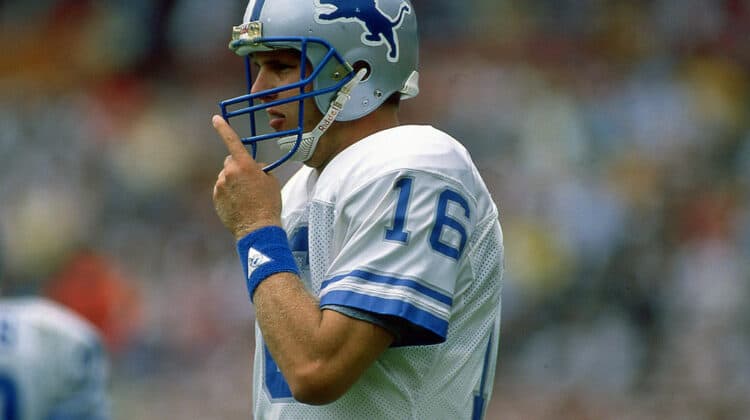How did the Cleveland Browns get their name?
Understanding the origin of the Cleveland Brown’s name requires a glimpse into their history and some of the most important members of the first squad.
This historical context will give you a clue as to where the name originated and also help showcase other important information about the team – such as their legendary early success and how it contrasts with the last few years in the team’s history.
The Start of the Team
Football was rapidly becoming popular across the country in cities like Detroit and Chicago, which led businessmen Arthur B. McBride and Robert H. Gries to decide that Cleveland, Ohio could support a team as well.
So in 1945, they started their squad, which hadn’t yet earned a name, and hired legendary coach Paul E. Brown.
Brown would remain the coach until 1962 and was a massive part of their early success in the AFC, which they joined for their first season in 1946.
The team made an immediate impact on the league, thanks to Coach Brown’s innovative coaching style and a team packed with talent.
They won the AFC Championship in their first four years of existence.
Brown’s success was founded on many unique innovations that other coaches later copied, such as filming his opponents and hiring a full-time staff of assistants.
Other Brown innovations included the modern face mask, the practice squad, and the draw play.
Brown was also the first coach to draft African-American players onto his team, which helped to break the color barrier.
These changes helped to make the Browns an immediately successful team.
In fact, they didn’t have their first losing season until 1956, which saw quarterback Otto Graham retire.
Before this season, Brown and Graham had led the team to 10 division titles in 10 years and seven championships, three of which they earned in the NFL.
At this point, the team had already earned its name.
But where did it originate?
The Naming Contest
When the team was founded in 1946, the owners held a contest in Cleveland to help name the group.
Cleveland – already brimming with excitement over a new football team – suggested many possibilities.
Once the names were read through and voted on carefully, “Browns” was the clear winner.
The name was given to respect the first coach, Paul E. Brown, and was one that gave him much pride.
This move was somewhat unusual – after all, other teams did not get their name from their first coach in this way.
How did Paul E. Brown earn this honor?
By the time the Browns were founded, Brown was already a beloved coach with over a decade of experience coaching at many levels.
Though not every player loved him – he was a strict disciplinarian and controlled the play calling with an iron fist – the town appreciated his success and all that he’d done for Ohio football in his career.
For example, Brown helped lead Severn to an undefeated state championship in 1930 and left the school with a 12-2-1 record.
He then took a head coach job at Massillon in 1932 when he was just 24, inheriting a team that had just finished the previous year with a 2-6-2 record.
Brown immediately made an impact by working hard to improve discipline, including banning sitting during a game.
He also focused hard on making his team fast rather than strong, as he believed quickness decided games.
The results were undeniable – the Tigers improved to 5-4-1 the next year and then 8-2 the following year.
By 1934, the Massillon Tigers went undefeated until their final game of the season and had an undefeated season the year after.
Brown was a strict but successful coach who had created a recruitment network to get players from the junior high program, another innovation.
Brown also ignored race restrictions and utilized African-American players on his team in a move that was far ahead of its time.
During his time with the Tigers, he also invented the playbook and won some state championships.
With such a high level of success, Brown was hired to coach the Ohio State Buckeyes in 1940.
He immediately made an impact by implementing his strict system of practice and drills, continuing to focus on quickness and was one of the first coaches to focus on the 40-year dash as a measure of speed.
These changes helped the Buckeyes and they went 7-1 in 1941.
And in 1942, they defeated rival Michigan – who they had tied 20-20 the previous year – with a 21-7 victory and won their first national championship.
This success – combined with time as a lieutenant in World War II – helped prepare Brown for the demands of coaching a professional team.
And he was rewarded by being named after one of the oldest and most successful teams in the league.
NEXT: Looking Back At 1988 Playoff Game Between Cleveland And Houston











Great article. Quick correction though. The AFC didn’t exist in the 1940’s. It was the AFL.